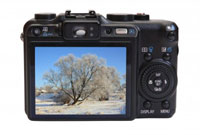
Fig. 1: Image showing Canon PowerShot G10 Digital Camera
Digital technology is the buzzword these days. Have you ever pictured life without digital technology? How would celebrations be without pictures? How would you preserve the special moments of life with your loved ones without pictures? Today each one of us is impacted by digital technology. And Digital cameras are an important invention in this field.
Earliest of ideas for creation of images on wall were established in Ancient Greece by passing the light though small hole. Actual word ‘photography’ comes from Latin word and means drawing with light. First ever picture was developed in year 1827. But a lot of patience was required for getting finished pictures as it took around 8 hours. French Inventor named Joseph Niepce has an important contribution to field of photography.
In October 1969, Willard Boyle and George Smith discovered Charged Coupled Device (CCD) which is known to be heart of every digital camera. Boyle and Smith were trying to make new type of semiconductor for the computers then. They also wanted to develop solid state cameras for their use in video phones at the same time. These geniuses just took one hour to draw basic structure of CCD, define its operations and outline its best suited applications.
By 1970, Boyle and Smith built CCD into earliest solid state video camera. And soon after, in year 1975, both of them showcased first CCD camera with sharp image quality for the broadcast TV. CCD technology has not just become imperative in broadcasting but in various video applications too. From desktop video-conferencing, security monitoring to endoscopy, it is used everywhere. Image scanners, copying machines, bar codes, facsimile machines also use CCDs for turning light patterns into valuable information.
Not until 1981, Sony Corporation launched prototype digicam, Mavica electronic still camera. This camera recorded pictures as the magnetic impulses on small 2 inch video floppy. Capturing of these images was done through 2 CCD chips. One of these chips was used for storing the luminance information while other recorded chrominance information. The camera produced 720,000-pixeled images. One could store these images either in field or frame mode in the floppy.
On selection of frame mode, sensors recorded two copies of the same picture. And Upto 25 images could be stored in each disk. While on selection of field mode, sensor recorded every picture on one track only, allowing upto 50 images. These images had fewer details as compared to the ones in frame mode.
MVC 5000 was known as leader in the image quality during that time. Early Mavica is not considered as true digicam even though it started revolution of digicams. It was video camera that could take video freeze frames. These attributes made Mavica bulky affair. It was perceived more as floppy box than a conventional camera.
In year 1986, world’s earliest megapixel sensor was launched by the Kodak scientists. This sensor was proficient enough to record 1.4 million pixels, producing 5×7 inches photo prints. Next year, the company introduced various products for manipulating, recording, storing, printing and transmitting video images. In 1990, Kodak released Photo CD system. The following year, the company launched professional digicam, Nikon F3 equipped by Kodak along with 1.3 megapixels. This range was targeted at photojournalists.
XapShot was another Hi-band video camera model during the time. This camera had built in self timer, flash along with rechargeable lead batteries. American version of the camera came with VCR/TV signaling capability for recording and playback of images. Basic software worked under the system 6/7 in combination with unique video capturing card attached to camera.
And soon after in 1990, world’s earliest digital consumer cam was introduced by Logitech. Dycam Model 1, black and white stored around 32 compressed pictures. It used one MB RAM on CCD of 376 x 240 pixels to store the images in around 256 gray shades, TIFF format. Going by today’s standards, Dycam had 8mm fixed lens, shutter speed of around 1 by 30 to 1 by 1000 second. This camera worked in a similar manner like XapShot but included digitalizing hardware. Users had to connect this camera to the PC for transferring images.
The earliest digital camera for consumer markets, working with home computer through serial cable was Apple QuickTake- 100. The camera made its debut in 1994. With built in flash, camera featured 640 x 480 pixels CCD producing 8 images recorded in the internal memory. The problem was posed by the small computer present inside the camera. Since onboard computer in the camera, CCD processor, took a lot of space, manufacturers such as Fuji designed square shaped digicams. These devices were not just difficult to use but also demanded the user to learn new way of handling them. Miniaturizing sensors helped companies such as Toshiba, Nikon, Olympus and Kodak to create smaller cameras.
NASA is still researching in the field of digital photography. They were the initiators of the research and are keeping pace with it. They have been working on replacement of CCDs now. Latest developments include Active Pixel Sensor which would soon replace CCD. It costs one third less than CCD and follows computer technology’s progression. Digicams using APS technology would be smaller and would also offer better quality images. These cameras come with range of accessories. New range of SLR cameras allows the users to change camera lens according to their needs. This opens doors to various digicam lenses. Even though history of digicams is just a few decades old, it is surely moving forward at great pace.
Filed Under: Invention Stories


Questions related to this article?
👉Ask and discuss on Electro-Tech-Online.com and EDAboard.com forums.
Tell Us What You Think!!
You must be logged in to post a comment.